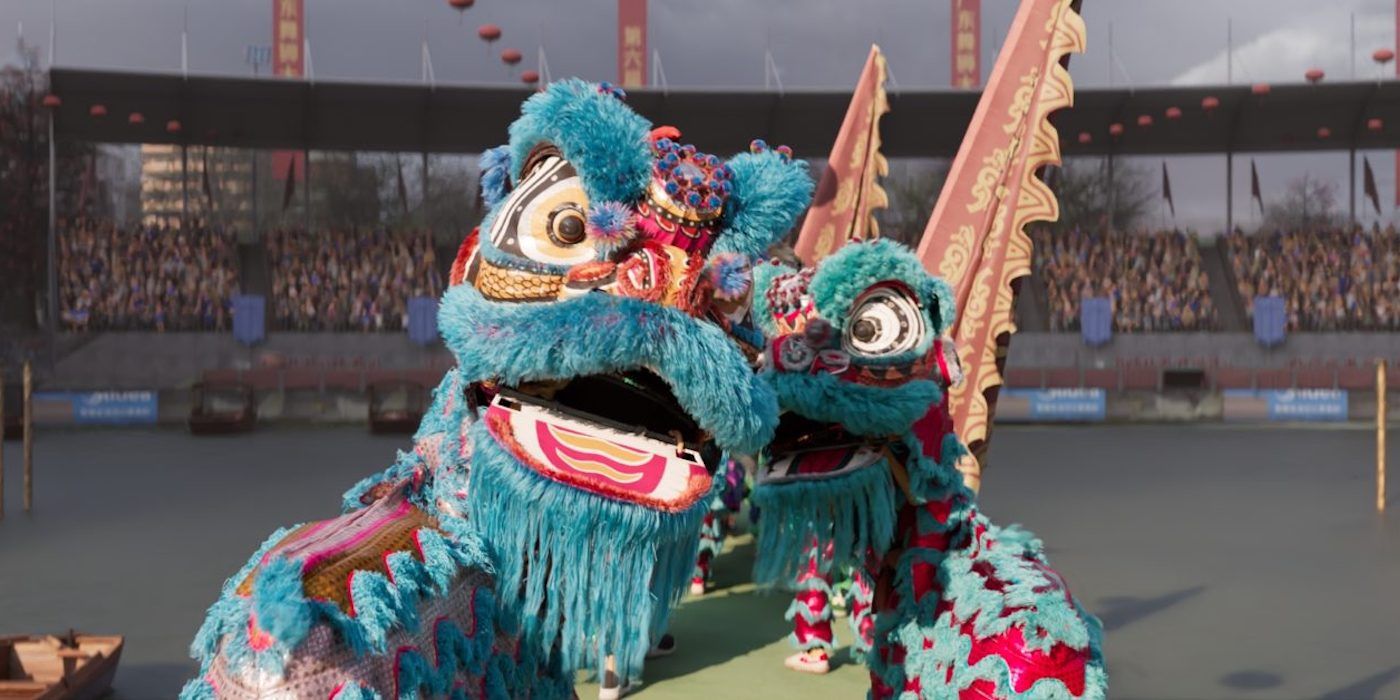I Am What I Am, a Chinese computer-animated film directed by Sun Haipeng, features animation so realistic it's easy to forget that it's animation. Yes, the characters are clearly cartoons that avoid the uncanny valley, but their textures and movements are far more realistic than the standard. Much of the time, they're wearing lion dancer masks, which look and move just like the real things. The backgrounds are so detailed that they're almost more real than reality. The stylized only-in-animation touches, from a brush-painted opening scene to some creative imaginings of non-visual senses, manage to blend in perfectly with the realistic aesthetic.
20 years ago, a film that looks like I Am What I Am couldn't exist. Even 10 years ago, it would have been inordinately expensive, a visual accomplishment only a $200 million Pixar production could pull off effectively. What makes I Am What I Am downright groundbreaking on top of being gorgeous is that it was a low-budget independent production. For an indie to surpass even the stunning work bigger-budget animated films have accomplished and approach the realism of Soul or Toy Story 4 feels like as big a deal for CG films as District 9 and Ex Machina were for indie special effects.
On the narrative front, I Am What I Am is a lot less accomplished, but it still works as a solid underdog sports movie. Other movies in the genre have set the standard narrative beats: down-on-their-luck kids enter a sporting competition and find an eccentric trainer to help them conquer or work around their weaknesses. Several montages later, they make a rough but inspiring go for the gold. It's a tried and true formula, and it ultimately works for I Am What I Am due to the unique sport of choice (lion dancing), interesting cultural elements, and the sheer drama of its final match.
The main characters in I Am What I Am are "left-behind" teenagers, mostly living on their own in the countryside while their parents take manual labor jobs in the city. Gyun, the main character, is the most developed. His emotional depth and anxieties around his physical frailness are brought to life in his conflicting desires to follow his dreams and to pay the bills for his struggling family. His trainer Qiang is also a complex character, having dealt with similar conflicts in the past and arguably having made the wrong choices.
Gyun's teammates, Kat and Doggie, are less multi-dimensional and work as comic relief. Kat is the more passable of the two, a proud weirdo who both looks and behaves like a monkey. Doggie, in contrast, is the film's most distracting weakness. His only joke, and only character trait, is that he's fat. Occasionally the slapstick relating to his weight is amusing, but the way the movie reduces his entire personality to just eating constantly and struggling with physical activity is exhausting to the point of offensiveness. The film's female characters are also lacking depth, mostly existing to inspire the men.
Cliches and problematic issues aside, I Am What I Am is a sweet crowdpleaser with a thrilling final act and incredible animation. The film has been a hit in China and played positively with audiences at the New York International Children's Film Festival. Further American release plans have yet to be announced, but those curious about the future of independent animation will find a lot to appreciate when they get the chance to see it.


